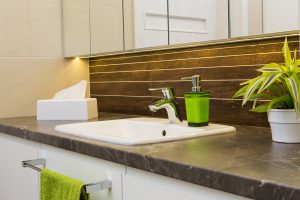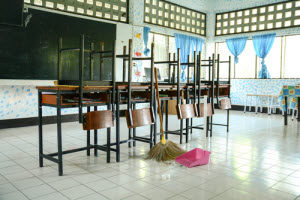As a facility manager of a school, you’ve got a lot to keep up with in terms of maintenance. However, one of the most important areas to focus on are the bathrooms in your school. There are a variety of factors that can contribute to the drop in quality of your bathrooms, but there are a few ways that you can stay ahead of the elements and keep your bathroom in great shape.
Factors That Affect Your School’s Bathrooms
The bathrooms in your school may be the most visited areas of the entire building, which means that you’ll need to stay on top of cleaning and maintenance to ensure that everyone walks away with a pleasant experience. However, the first step towards keeping your bathroom in great shape is identifying the factors that affect your school’s bathrooms.
- Unpleasant Odors. There are a few reasons why your bathroom has a distinct and unpleasant smell, but the first step is identifying where the smells are coming from before you initiate a plan to rid your restroom of these odors.
- Dirty Floors & Vanities. No one likes to see excessive dirt and crud on the floor, especially in the bathroom. Countertops and bathroom vanities are also known to collect dirt, so executing a thorough cleaning plan is important.
- Low Water Pressure. If your water pressure is low, it can add stress and aggravation to the bathroom experience. Be sure that the sink and toilet water pressure are up to your standards.
- Mold Growth. Over time, your bathroom will begin to sprout mold because the humidity and moisture create an environment where fungus thrives, and foul smells are present.
Execute a Heavy-Duty Cleaning & Maintenance Strategy
Make a plan to clean your school’s restroom vigorously on a regular basis—and not just sweeping the floor and throwing away any paper towels that didn’t quite make it into the trash. You’ll want some anti-bacterial cleaning products to meticulously clean the restroom. This can help combat the smells and bacteria that are growing. You’ll also want to regularly check your facility’s water pressure to be sure that the water in the sink and the toilet flushing are up to par.
Stop Mold in Its Tracks
 You’ll be able to spot mold sprouting in the corners of your bathroom, but that’s not the only place it can grow. Often, mold begins to sprout inside toilet partitions that have an inner core. The kraft paper interior stays moist due to the humidity in the bathroom. Over time, the mold will begin to take over. Once mold has grown inside these partitions, it’s difficult to clean and salvage the partitions.
You’ll be able to spot mold sprouting in the corners of your bathroom, but that’s not the only place it can grow. Often, mold begins to sprout inside toilet partitions that have an inner core. The kraft paper interior stays moist due to the humidity in the bathroom. Over time, the mold will begin to take over. Once mold has grown inside these partitions, it’s difficult to clean and salvage the partitions.
However, you can stay ahead of mold growth and put off on replacing your partitions repeatedly. Using HDPE plastic partitions can help ward off mold because this solid plastic doesn’t feature an inner core that can absorb moisture. Installing HDPE plastic partitions has a variety of benefits: they’re easy to clean, mold won’t grow, and they outlast most other materials.
Picking a Long-Lasting Solution
Having a solid plan to regularly maintain your bathrooms is important. You’ll want to take the necessary steps that you’re combatting the elements, preventing any mechanical issues, and warding off mold and bacteria. HDPE plastic partitions can aid you in a number of ways, from preventing mold growth within your stalls, reducing the foul odors, and having a material that can last a long time to stand up to the factors that affect your school’s restrooms.
Want to learn more about HDPE plastic partitions and how using the right materials can help you maintain your school’s bathrooms? Check out this eBook, Choosing Bathroom Materials, from your friends at Scranton Products.

 It’s important to give your hallways a thorough cleaning before the school year begins. Most germs and bacteria are picked up through foot traffic, and more often than not, those germs end up in the hallways. Utilizing a strong disinfectant cleaner can help combat the spread of germs. However, there are green cleaning products on the market that can help you achieve germ removal and still keep harmful chemicals from contaminating the air.
It’s important to give your hallways a thorough cleaning before the school year begins. Most germs and bacteria are picked up through foot traffic, and more often than not, those germs end up in the hallways. Utilizing a strong disinfectant cleaner can help combat the spread of germs. However, there are green cleaning products on the market that can help you achieve germ removal and still keep harmful chemicals from contaminating the air. Be sure to check your air and water quality to see if it’s up to code. Find a water tester in the area to help you conduct these routine tests so you can see where the quality lies. If the result isn’t as high as you’d hoped, consider replacing the filtration system. When it comes to air, there are several ways that you can do your part increase the quality. Consider getting indoor plants, utilize
Be sure to check your air and water quality to see if it’s up to code. Find a water tester in the area to help you conduct these routine tests so you can see where the quality lies. If the result isn’t as high as you’d hoped, consider replacing the filtration system. When it comes to air, there are several ways that you can do your part increase the quality. Consider getting indoor plants, utilize 